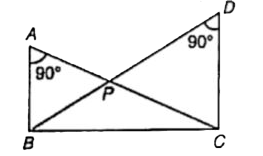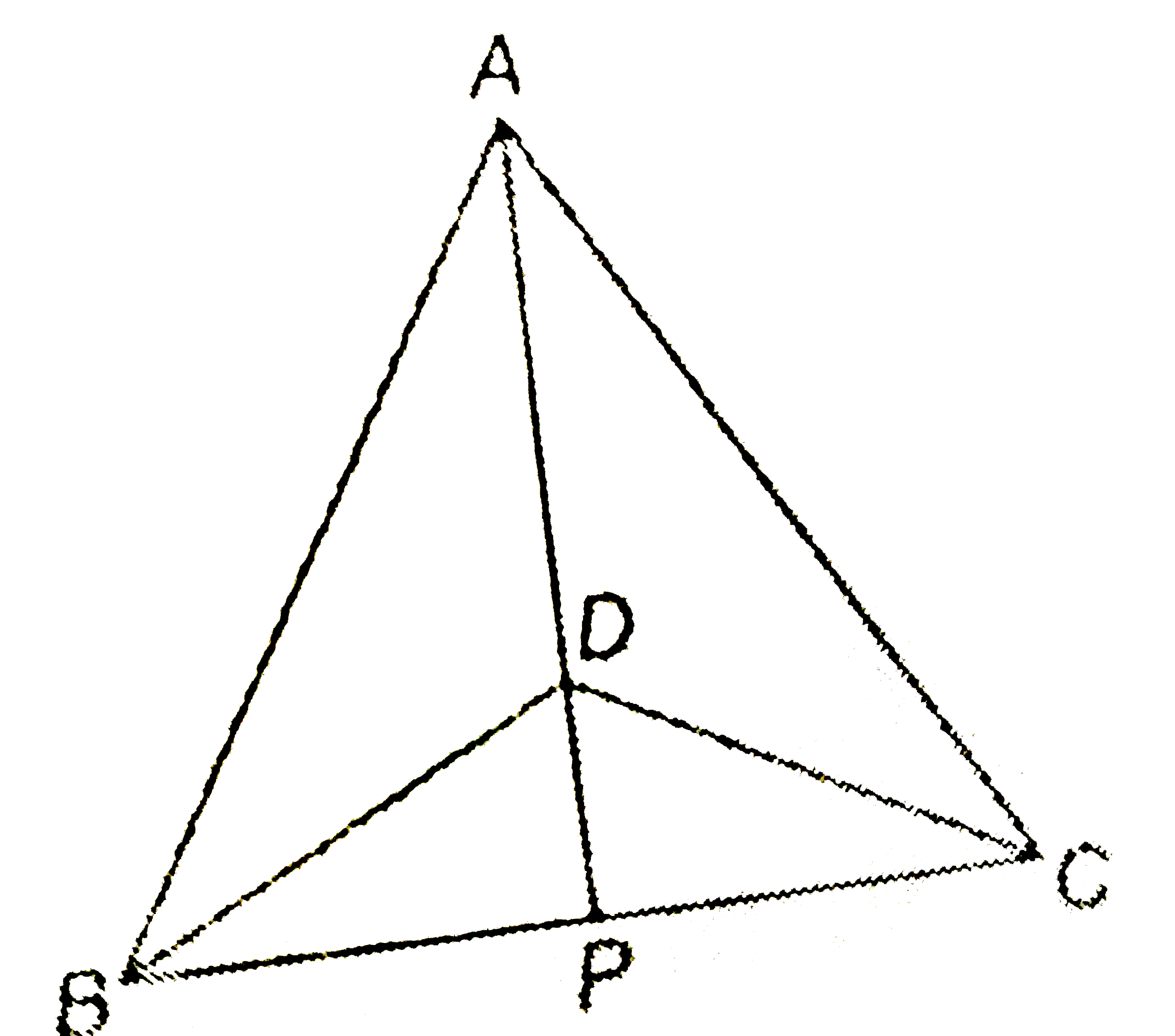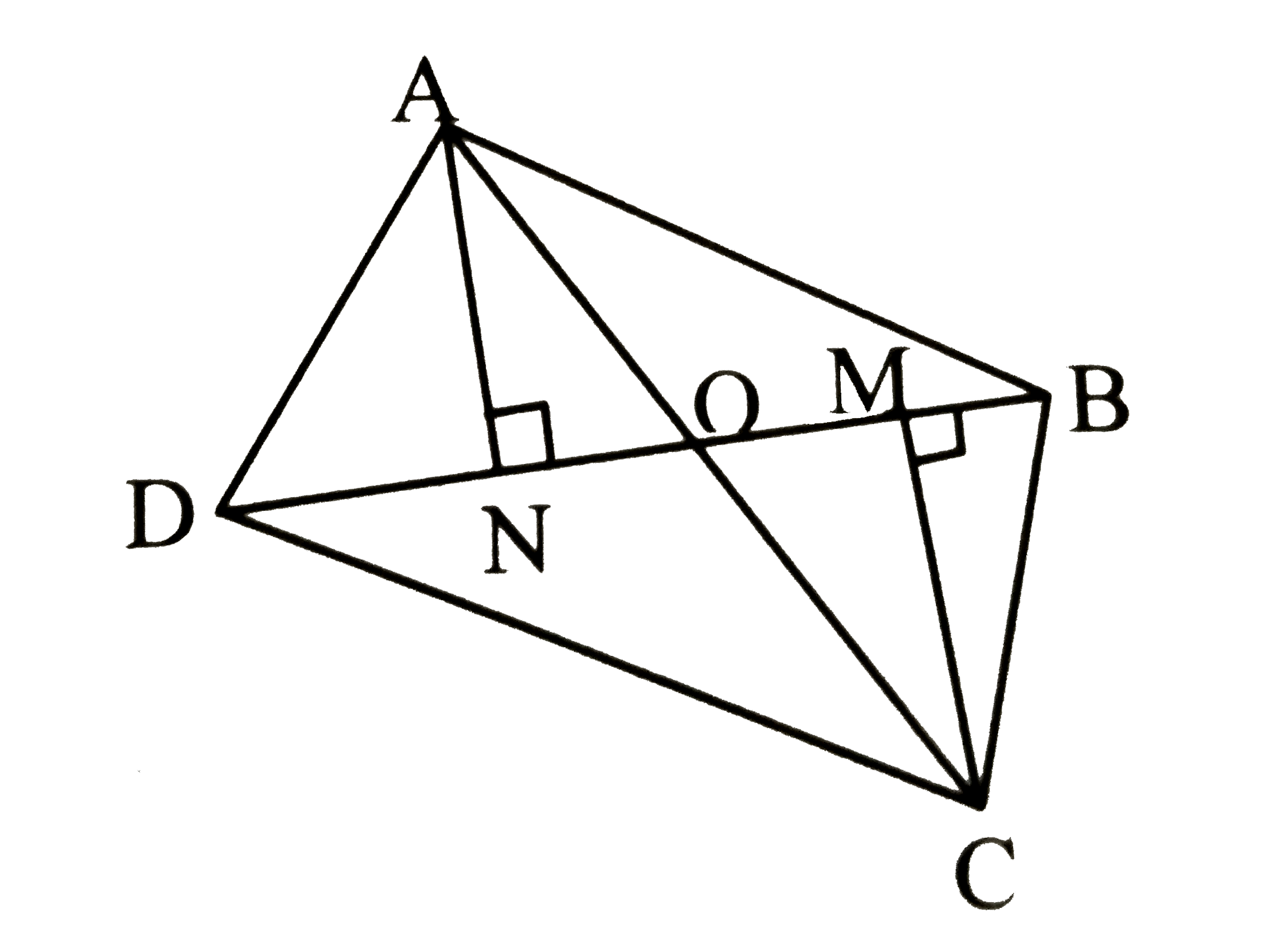ΔABCandΔDBC have a common base and drawn towards one sides. ∠BAC=∠BDC=90∘. If AC and DB intersect at P, then:

AP×PC=BP×PD
AP×BP=PC×PD
AP×PD×=PC×BP
none of the above
The correct Answer is:A
Step by step video solution for DeltaABC and DeltaDBC have a common base and drawn towards one sides. angleBAC = angleBDC = 90^(@). If AC and DB intersect at P, then: by Maths experts to help you in doubts & scoring excellent marks in Class 14 exams.
Updated on:21/07/2023Topper's Solved these Questions
Similar Questions
Two triangles BACandBDC , right angled at AandD respectively, are drawn on the same base BC and on the same side of BC . If AC and DB intersect at P, prove that AP⋅PC=DP⋅PB.
View SolutionΔABCandΔDBC are two isosceles triangles on the same base BC and vertices A and D are on the same side of BC (see figure). If AD is extended to BP intersect BC at P, show that

ΔABD≅ΔACD
View Solution
Knowledge Check
Two right triangles ABC and DBC are drawn on the same hypotenues BC on the same side of BC. If AC and DB intersects at P, then :
 AAPPC=BPDPBAP×DP=PC×BPCAP×PC=BP×DPDAP×BP=PC×PD
AAPPC=BPDPBAP×DP=PC×BPCAP×PC=BP×DPDAP×BP=PC×PDΔABC and ΔDBC are on the same base BC but on opposite sides of it. AD and BC intersect each other at O. If AO=a cm, DO=b cm and the area of ΔABC=xcm2, then what is the area (in cm2) of ΔDBC?
AbxaBabxCab2xD(a+b)2xIn ΔABC,∠B=90∘. If P is the mid-point of side AC, then
PA=PB=AACB3ACC12ACD2AC
ΔABCandΔDBC are two isosceles triangles on the same base BC and vertices A and D are on the same side of BC (see figure). If AD is extended to BP intersect BC at P, show that

ΔABP≅ΔACP
View SolutionΔABCandΔDBC are two isosceles triangles on the same base BC and vertices A and D are on the same side of BC (see figure). If AD is extended to BP intersect BC at P, show that

AP bisects ∠A as well as ∠D.
View SolutionΔABC and ΔDBC are two isosceles triangles on the same base BC and vertices A and D are on the same side of BC (see figure). If AD is extended to intersect BC at P, show that :
(i) ΔABD≅ΔACD
(ii) ΔABP≅ΔACP
(iii) AP bisects ∠A as well as ∠D
(iv) AP is the perpendicular bisector of BC.

View SolutionΔABCandΔDBC are two isosceles triangles on the same base BC and vertices A and D are on the same side of BC. If AD is extended to intersect BC at E, show that
(i) ΔABD≅ΔACD
(ii) ΔABE≅ΔACE
(iii) AE bisects ∠A as well as ∠D
(iv) AE is the perpendicualr bisector of BC.

View SolutionSlove the following questions.
In the figure, ΔADBandΔCDB are drawn on the same base BD.if AC and BD intersect at O, then prove that A(ΔADB)A(ΔCDB)=AOCO.

View Solution
